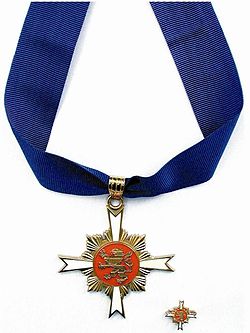| Decoration of Merit | |
|---|---|
 | |
| Awarded by the Minister-President of Hesse | |
| Type | Civil order of merit |
| Established | 1 December 1989 |
| Country | Germany |
| Awarded for | Outstanding contributions to the state of Hesse |
| Grades | Member |
| Statistics | |
| Total inductees | 430 |
| Ribbon bar of the order | |
The Hessian Order of Merit (German : Hessischer Verdienstorden) is a civil order of merit, and the highest award of the German State of Hesse. The order was established 1 December 1989.